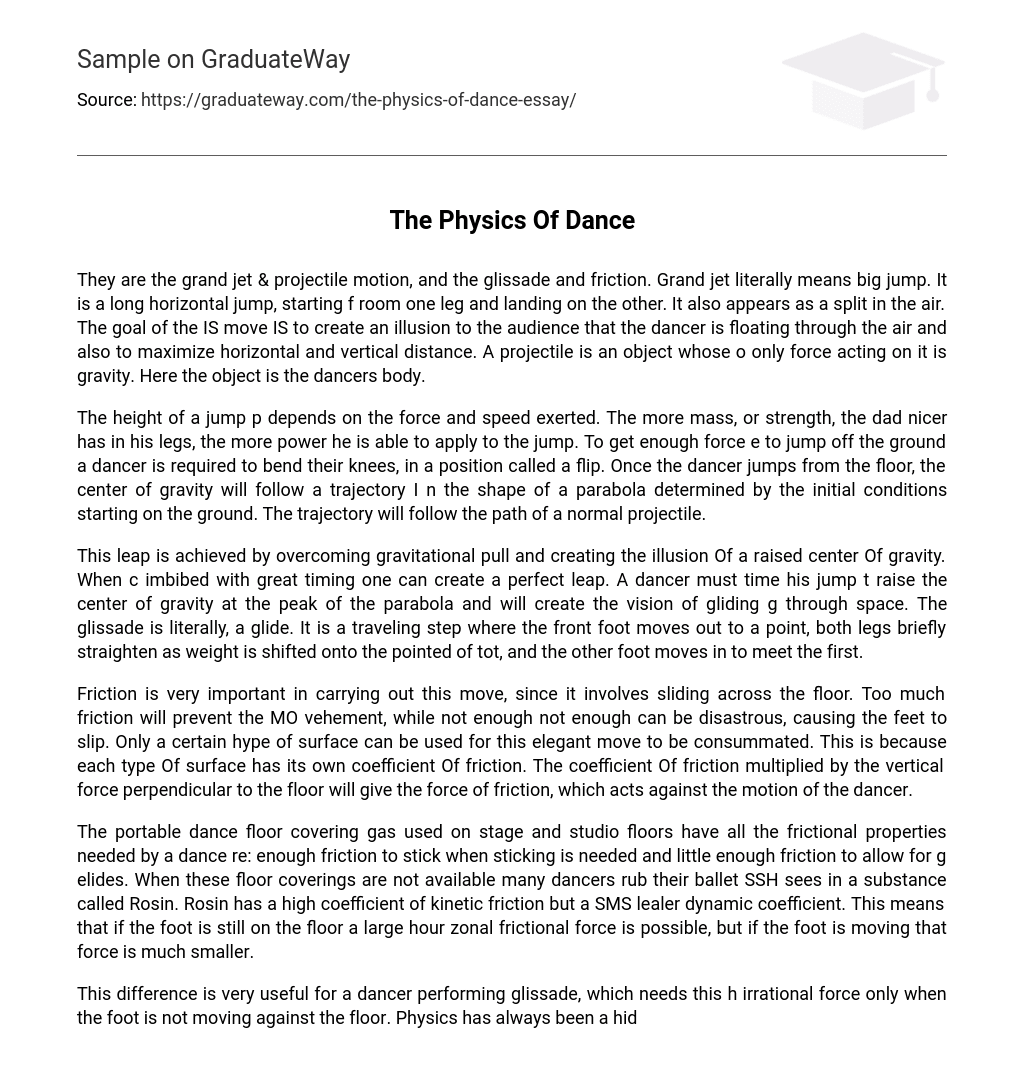They are the grand jet & projectile motion, and the glissade and friction. Grand jet literally means big jump. It is a long horizontal jump, starting f room one leg and landing on the other. It also appears as a split in the air. The goal of the IS move IS to create an illusion to the audience that the dancer is floating through the air and also to maximize horizontal and vertical distance. A projectile is an object whose o only force acting on it is gravity. Here the object is the dancers body.
The height of a jump p depends on the force and speed exerted. The more mass, or strength, the dad nicer has in his legs, the more power he is able to apply to the jump. To get enough force e to jump off the ground a dancer is required to bend their knees, in a position called a flip. Once the dancer jumps from the floor, the center of gravity will follow a trajectory I n the shape of a parabola determined by the initial conditions starting on the ground. The trajectory will follow the path of a normal projectile.
This leap is achieved by overcoming gravitational pull and creating the illusion Of a raised center Of gravity. When c imbibed with great timing one can create a perfect leap. A dancer must time his jump t raise the center of gravity at the peak of the parabola and will create the vision of gliding g through space. The glissade is literally, a glide. It is a traveling step where the front foot moves out to a point, both legs briefly straighten as weight is shifted onto the pointed of tot, and the other foot moves in to meet the first.
Friction is very important in carrying out this move, since it involves sliding across the floor. Too much friction will prevent the MO vehement, while not enough not enough can be disastrous, causing the feet to slip. Only a certain hype of surface can be used for this elegant move to be consummated. This is because each type Of surface has its own coefficient Of friction. The coefficient Of friction multiplied by the vertical force perpendicular to the floor will give the force of friction, which acts against the motion of the dancer.
The portable dance floor covering gas used on stage and studio floors have all the frictional properties needed by a dance re: enough friction to stick when sticking is needed and little enough friction to allow for g elides. When these floor coverings are not available many dancers rub their ballet SSH sees in a substance called Rosin. Rosin has a high coefficient of kinetic friction but a SMS lealer dynamic coefficient. This means that if the foot is still on the floor a large hour zonal frictional force is possible, but if the foot is moving that force is much smaller.
This difference is very useful for a dancer performing glissade, which needs this h irrational force only when the foot is not moving against the floor. Physics has always been a hidden aspect of dance and incorporated into j gust about every move. Jumping moves like the grand jet is an example of project ill motion effected by: force,speed,and gravity; while sliding moves like the glissade are affected by friction-A truly skilled dancer knows and understands the effects of these f ores on their moves and how they can be used to enhance their performance results.





